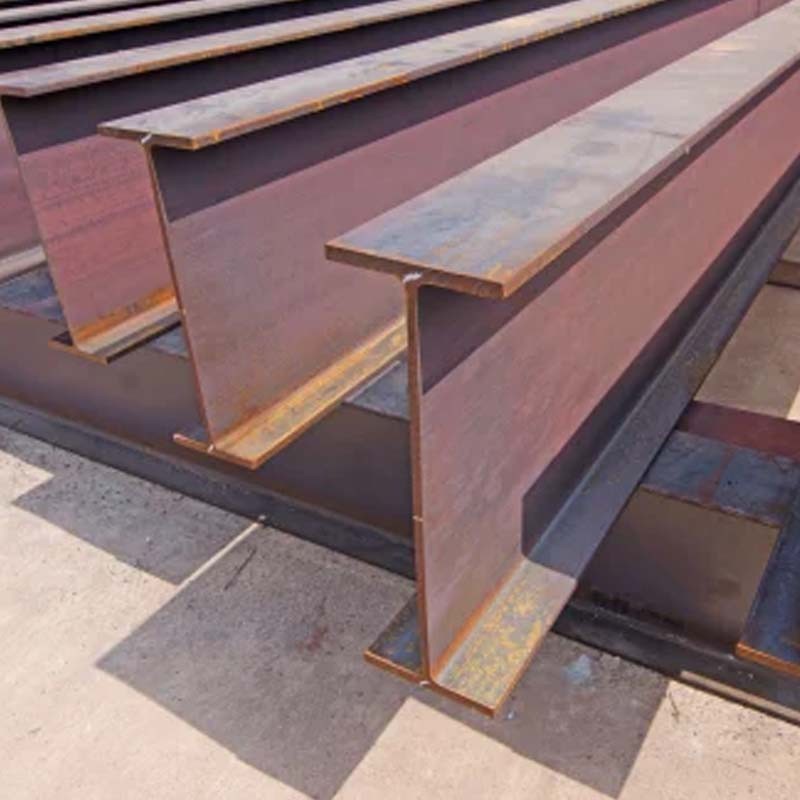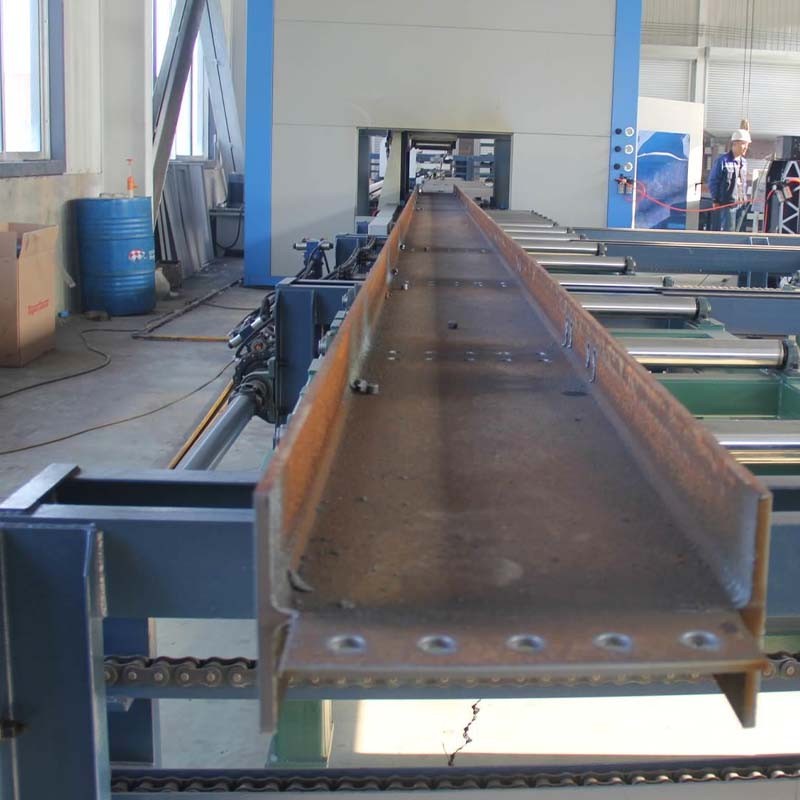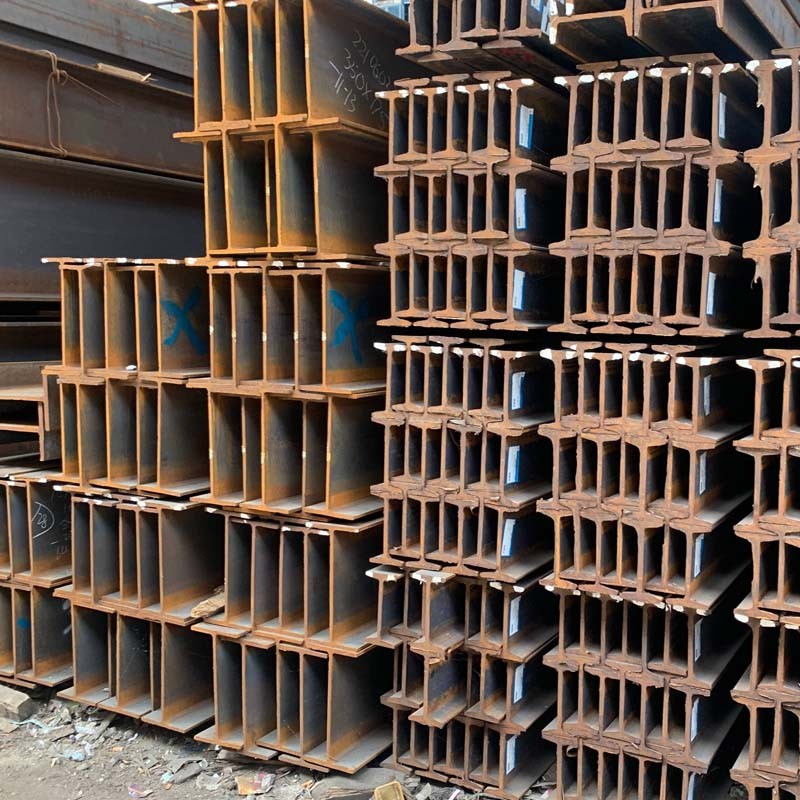
As the name implies, I-beam is a kind of "I"-shaped cross-section steel. Its processing method can be hot rolling or cold drawing. It is one of the common building materials. The inner surface of the upper and lower flanges has a slope, generally 1:6, making The flange is thin on the outside and thick on the inside. Therefore, the cross-sectional properties of the I-beam on the two main planes are greatly different, making it difficult to exert the strength properties of the steel in application. Although thickened I-beams have also appeared on the I-beam market, the structure of the I-beam has determined its shortcomings in torsional performance.
I-beams are mainly divided into ordinary I-beams, light I-beams and wide-flange I-beams. According to the height ratio of flange to web, it is divided into wide, medium and narrow wide flange I-beams. The first two are produced in sizes 10 to 60, which means the corresponding height is 10 to 60cm. At the same height, lightweight I-beams have narrow flanges, thin webs, and light weight. Wide-flange I-beam is also called H-shaped steel. The cross-section feature is that the legs are parallel and there is no slope on the inside of the legs.
Installation steps of I-beam
1. Measurement
Before installing the I-beam, it is necessary to measure and accurately measure the length, width, height, etc. of the I-beam to avoid errors during the installation process. In particular, steel girders need to be installed with a flat bottom to avoid wobbling or instability.
2. Cushion
Before installing the I-beam, the bottom of the steel beam needs to be cushioned to increase its stability. The material of the cushion can be wood board or other hard materials. Make sure that the thickness of the cushion is the same and the bottom is flat to avoid deformation of the steel beam.
3. Fixed
After the I-beam is placed in the predetermined position, it needs to be fixed. The most commonly used method is to use bolts and nuts for fastening, and the bolts and nuts should be evenly distributed on the surface of the I-beam so that the force is relatively balanced. After the fixation is completed, mechanical calculations are required to ensure that it can withstand the predetermined weight and pressure.
4. Auxiliary equipment
In addition to the above operations, the use of some auxiliary equipment also needs to be considered. For example, shock pads, rubber pads, or other cushioning materials can be used to relieve the pressure between the building and the steel beams. In addition, it is also possible to add a closed design to the steel beam to increase its safety and service life.
Advantages of I-beam installation
1. Good stability
After installation, the I-beam can provide better stability and load-bearing capacity. Its shape and structure can effectively reduce the internal compression and displacement of the building and maintain the stability of the building.
2. Low maintenance cost
Due to the high stability and durability of I-beams, maintenance costs are relatively low. In long-term use, it is not prone to deformation or damage, saving the cost of later maintenance and replacement.
3. Convenient construction
During the construction process, I-beams can usually be prefabricated, making their installation relatively convenient. Its flexibility and plasticity are relatively high, and it can be processed and installed according to different shapes of buildings.
4. Wide range of application
I-beams have a wide range of applications, not only for load-bearing and support of buildings, but also for the construction of large-scale projects such as bridges and tunnels. In industrial manufacturing, it can also be used to bear the weight of heavy equipment and machines.
The installation of I-beams is a complex process that requires consideration of various factors to ensure its stability and load-bearing capacity. During the installation process, you need to pay attention to selecting appropriate materials, using correct fixing methods, and processing and installing I-beams quickly and reliably to prevent potential safety hazards. I-beams provide a wider range of applications and better properties, becoming one of the important building materials in construction engineering and industrial manufacturing.







|

|

|

|

|
| Timely Info | Independent | Platform | Multiple guarantees | Self-operated storage |
| About us | Channel | Useful tools |
|---|---|---|
| About China Steel Market | Prices | Steel Weight Calculation |
| Contact Us | Answers | Why Choose Us |
| Terms & Conditions | Inventory | |
| Privacy Policy | Help |
Hot search words: